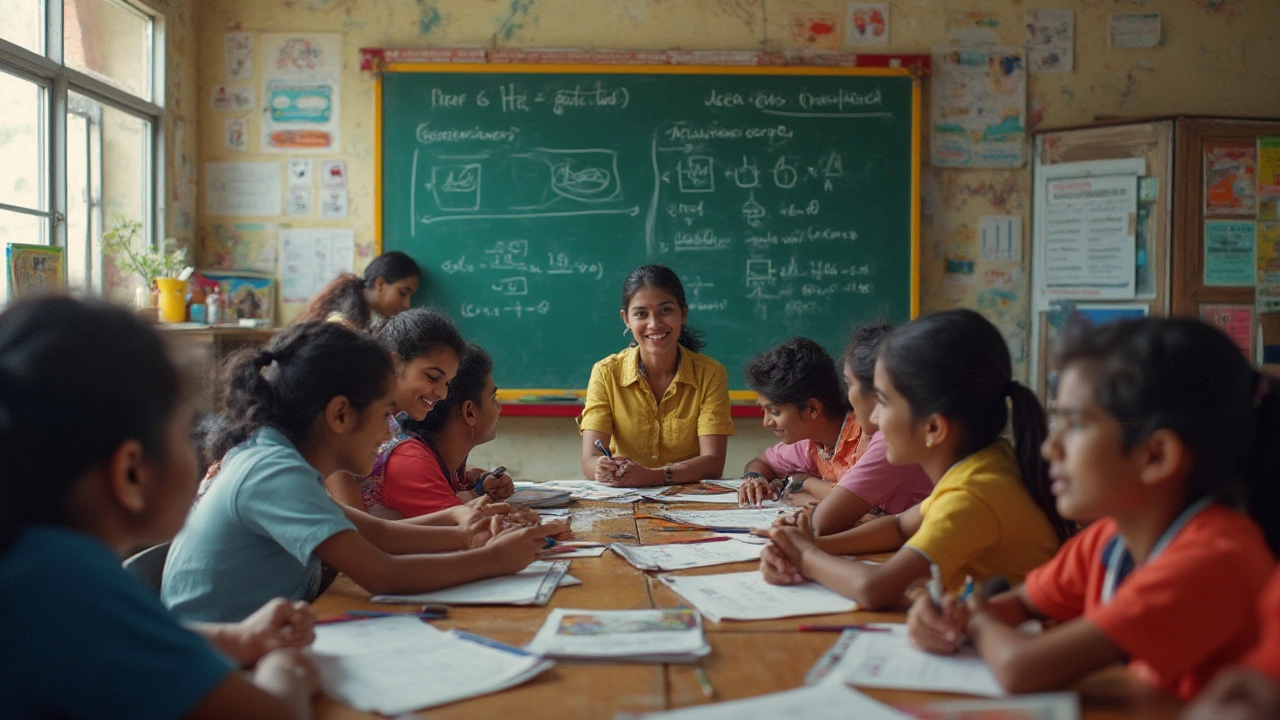Which IIT Gave the Easiest JEE Advanced Paper? Analysis, Facts & Insights

Picture this: You walk into the JEE Advanced exam hall, expecting a battlefield. But halfway through, you look around—everyone’s already smiling, scribbling answers with confidence. It’s not a dream. Some years, the JEE Advanced paper really did feel easier, sparking debate in coaching corridors and Reddit threads across India. People still talk about those rare years where the impossible seemed easy, and every parent secretly wished their kid had appeared then. What’s behind these unexpected shifts in difficulty? Let’s pull apart the facts, sift through numbers, and figure out which IIT dropped the legendary “easiest” JEE Advanced exam—and what that means for future hopefuls.
How JEE Advanced Papers Are Made and Who Sets Them
There’s this almost mythical aura around the way JEE Advanced papers come together. Each year, a different IIT is given the job to create what’s meant to be the most competitive entrance test in the country. There’s a roster: IIT Bombay, IIT Delhi, IIT Kharagpur, IIT Kanpur, IIT Madras, IIT Roorkee, and IIT Guwahati—they rotate the responsibility. No IIT sets the paper for two years running. This rotation keeps things fair, but it also means each IIT brings its unique personality and teaching culture into play. For example, IIT Kanpur has a reputation for loving physics puzzles. IIT Madras is famous for its slightly longer problems. Some say IIT Guwahati mixes things up, throwing in questions that feel very fresh, even a bit experimental.
But the process itself is wrapped in secrecy. The selected institute forms a paper-setting committee, made up of experienced professors, who work in strict isolation. There’s no mobile phone allowed, no WiFi, no family visits—think high-security bank vault style. They pick questions not only from the entire gamut of the 11th and 12th standard syllabi but also check for originality (no repeats allowed). The idea is to test core concepts, logic, speed, and creativity together. Once the first draft is ready, another independent group reviews the paper. This ensures no leak or glaring error slips through. The format—number of sections, marking scheme, presence or absence of negative marking—changes year to year, which keeps students guessing and coaching institutes on their toes.
Despite all this rotation and secrecy, each IIT leaves fingerprints on the paper—whether it’s in the length of questions, the fondness for tricky math, or those infamous killer chemistry passages nicknamed “Acid Tests” by toppers. Over the years, veterans have started associating certain IITs with either tough or easier papers, but is that just myth? Or does the data tell us something?
Historical Analysis: Which Years Were The Easiest?
When students recall JEE Advanced, some years stand out as “legendary” for their supposed ease. The 2010 paper, for instance (set by IIT Madras), gets cited all the time. Cut-offs soared that year. People walked out early, and test prep forums buzzed with disbelief. But the story isn’t just about a feeling— it’s hidden in numbers: the average score, qualifying marks, and the number of students who crossed the cut-off.
Let’s look at some proper data:
| Year | Conducting IIT | Average Score (%) | Cut-off Marks (GEN) | Student Reactions |
|---|---|---|---|---|
| 2010 | IIT Madras | 31 | 190/480 | Considered easy, high cut-off |
| 2016 | IIT Guwahati | 27 | 124/372 | Moderate, some called Paper 1 easy |
| 2018 | IIT Kanpur | 16 | 90/360 | Tough, record low selection |
| 2022 | IIT Bombay | 21 | 89/360 | Mixed, Paper 2 easier than Paper 1 |
| 2015 | IIT Bombay | 28 | 105/504 | Relatively easy, but time crunch |
From the table, one thing jumps out: 2010 saw a big spike in the qualifying marks. In most years, the cut-off hovers much lower. High cut-off means the paper felt easier to most students, as many reached the threshold. In forums and old coaching blog posts, 2010 gets called the easiest ever—some toppers scored almost 400 out of 480, which is rarely seen in the JEE Advanced universe. But it’s not always a pattern that repeats whenever IIT Madras sets the paper. In other years (like 2005, 2017), the same IIT leaned tough. So, the “easy” tag isn’t a fixed trademark; it can change wildly year to year.
Recent memory also puts 2016 (IIT Guwahati) and 2015 (IIT Bombay) in the “easier” bracket, but only one paper (sometimes even one subject section) might feel that way, while the rest stay stubbornly tough. So, the hunt for the “easiest” often comes down to specifics: Did math have more solvable questions? Was physics more NCERT-centric, making it more manageable for students who focused on textbooks? But year after year, 2010 sticks out in public memory, with students and teachers both agreeing that the *jee advanced* that year threw out more gifts than curve balls.

Does An Easier Paper Mean Easier Selection?
This is a question that always gets debate going. You’d assume an easy paper opens doors for everyone, right? But here’s the thing: when the paper is easy, cut-offs shoot up. That means competition stiffens. Suddenly, silly mistakes cost you dearly. In a tough paper, nobody gets high marks, and the smallest edge counts. In an easy paper, one missing answer can be the difference between a dream IIT seat and just-missed-it heartbreak.
The 2010 cut-off proves it. To get into the general category, you needed almost 40 percent marks. Compare this to 2022, where you just needed about 25 percent. This puts pressure on accuracy and time management. Coaching institutes often say, “Easier paper, higher risk.” You get less time to check, less scope for error, and everyone’s in a close race. Suddenly, the things that mattered—like practice speed, mock test revision—become all-important. My friend’s nephew, who took the 2016 exam, said losing track for two minutes in Paper 2 set him back thirty ranks, just because everyone else also found it simpler and finished quickly.
There’s also a hidden thing: when the paper feels easier, last-minute crammers and those who depend on memory rather than concepts can sneak ahead, at least in theory. But the reality is that JEE Advanced question-setters usually design papers so that even “easy” ones test basic logic cells and quick recall. Easy, yes, but “crackable only with hard work,” as one coaching legend in Kota constantly repeats.
So, if you’re banking on the hope for another “easy year,” remember, it’s just as cutthroat. Sometimes even more than the famously tough years.
Why Did IIT Madras's 2010 Paper Feel So Manageable?
What exactly made 2010 JEE Advanced different? Was it just that the questions were straightforward? Or did it run deeper? If you talk to students and teachers from that year, a few patterns emerge:
- Direct and Familiar Questions: The bulk of questions followed well-practiced types; nothing out-of-syllabus, hardly any inventive twists.
- Clear Instructions, No Surprises: No new marking scheme thrown in at the last minute—very little confusion. Sometimes it isn’t the questions themselves, but sneaky new types that stump exam-takers.
- Balanced Level Across Subjects: Normally, at least one subject pulls down scores (like elusive physical chemistry, or time-eating math). That year, physics, chemistry, and math seemed fair to most students.
- Tricky But Simple: The trickiest problems could be solved with standard tricks—no guesswork, no eye-watering calculation.
- Boost for NCERT and Basics: Much of the paper was straight from the backbone syllabus. Students strong in NCERT, who drilled basics over back-breaking coaching stuff, thrived.
That’s not all—2010’s paper also skipped long calculation-based questions, the kind that usually eats time and morale. There’s always luck involved, and maybe that year, the stars aligned for a big batch of dedicated, well-prepared students. But these recipe changes explain why so many still call it the easiest paper in JEE Advanced history.
Another interesting bit: coaching culture was very different then. Most toppers prepped with traditional bookwork instead of elaborate online mock test series. Many older candidates tell me that a similar paper now, with today’s crazy level of competition and digital prep, would be blitzed through even quicker—but cut-offs would be dizzyingly high. That’s how the needle keeps moving, and why history doesn’t always repeat, even if it rhymes.

Tips For Future Aspirants: What To Learn From "Easiest Year" Stories
Here’s where things get practical. Don’t waste time predicting which IIT will set a simpler paper in your year—because the cycle keeps spinning, and recent patterns mean little. IITs love keeping everyone guessing. But you can learn a lot from the stories about the 2010 “easy” year—whether you’re burning the midnight oil in Patna, playing cricket between study sessions in Hyderabad, or chilling with a cat called Whiskey (like me, except I’m out of the IIT race for good). Here’s what actually helps:
- Master the basics—direct questions reward the well-prepped in foundation, not random fact-crammers or those piling up obscure tricks.
- Keep up speed and accuracy—easy papers are fast, cut-throat sprints. One slip means a major rank drop.
- Don’t neglect NCERT textbooks—especially in chemistry, lots of “easy” year questions were straight-lifted or directly inspired by textbook lines.
- Practice full-length tests with shifting difficulty—sometimes a “tough” mock is less useful than a balanced one that mimics recent trends.
- Learn from the mistakes of others—lots of students missed rank jumps due to silly errors in the “easiest” years. Focus on checking, re-checking, and not getting overconfident.
- Stay up to date—check last 10 years’ papers. There’s a rhythm to these exams, and knowing it can save hours of anxiety.
- Remember, every year is different—so don’t rely on luck, but do sharpen your basics and speed. No IIT sets a paper that’s “free marks” in the true sense.
In my own house, my son Neil is years away from exams like these. Still, I can see how stories from previous years, about “easy” or “hard” papers, affect students’ nerves. My advice? Read the stories, study the numbers, but prep for everything. If lightning strikes and you get the “easy” year, you’ll ride it to the campus gates. If not, you’ll still be ready for those classic IIT curveballs.